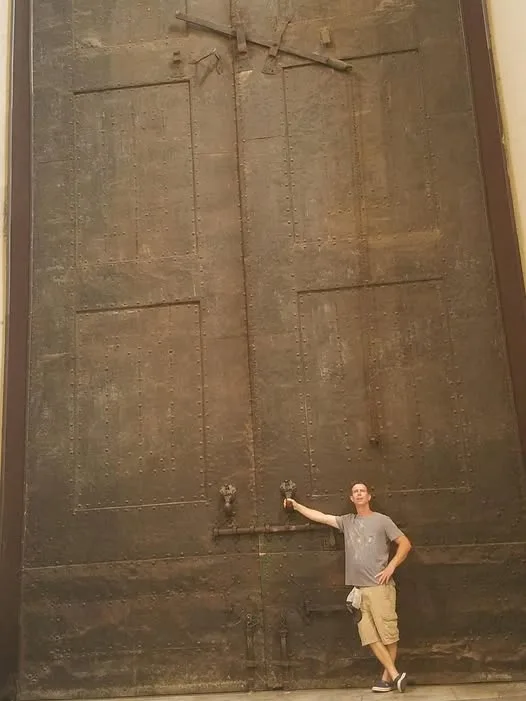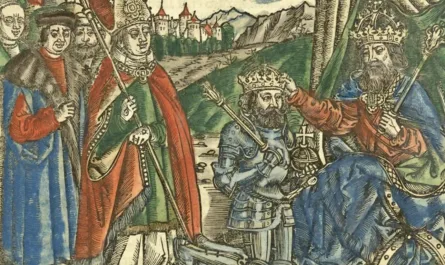When we think of the Roman Empire, our minds conjure images of towering aqueducts, magnificent forums, and colossal coliseums. But sometimes, history’s most compelling stories are hidden in plain sight, in the details we often overlook. The question of a “Constantine palace” and its solid bronze doors leads us on a fascinating journey, revealing not just a specific artifact, but the very essence of a pivotal moment in history: the rise of Christianity and the transformation of Rome.

While no doors from a single “Constantine palace” in Rome exist today, your query points to something even more remarkable: a collection of monumental bronze doors that were either part of the world Constantine inhabited or were directly incorporated into the monumental churches he founded. They are a physical, touchable link to the city’s past, and a testament to the incredible engineering of ancient Rome.
The Doors of the Lateran Basilica: A Direct Link to Constantine’s Legacy
If there is one set of doors that embodies the spirit of your question, it is the colossal bronze portals of the Archbasilica of Saint John Lateran. This church is not just any church; it is the cathedral of Rome, the “mother and head of all churches in the city and the world.” Its story is intertwined with Constantine’s own.
When Constantine embraced Christianity, he donated the Lateran Palace, a former imperial estate, to the Pope. He then funded the construction of a grand basilica on the site, which became the first official seat of the Bishop of Rome. The doors you see today are not from that original basilica, nor were they made for it. Instead, they were repurposed from the ancient Roman Curia Julia—the Senate House in the Roman Forum—and moved to the Lateran Basilica in the 17th century.
These doors are not merely decorative; they are a marvel of ancient Roman craftsmanship. Cast in solid bronze, they weigh several tons, yet they are so perfectly balanced that a single person can open and close them with ease. As you walk through them, you are literally passing through a piece of Roman history, one that once welcomed senators and emperors and now welcomes pilgrims from all over the world, a living symbol of the transition from pagan Rome to a Christian capital.
The Pantheon Doors: A Window into Constantine’s Rome
While not directly tied to a building he founded, another set of doors stands as an incredible testament to the world Constantine knew and walked through. The doors of the Pantheon, one of the best-preserved buildings from ancient Rome, have been in continuous use for nearly 2,000 years.
Dating back to the reign of Emperor Hadrian around 126 AD, these doors are not just “old”—they are a powerful symbol of Roman engineering and an enduring piece of history. When Constantine came to power, the Pantheon was still a pagan temple dedicated to all the gods. He would have known these bronze doors well, as they were a prominent feature of the city’s landscape. Like the Lateran doors, they are solid bronze and a miracle of preservation, having survived countless wars, sackings, and the passage of time largely because the Pantheon was converted into a church in the 7th century.
The Grand Palace of Constantinople: The True “Constantine Palace”
Your query also hints at a crucial piece of historical context. While Constantine did maintain residences in Rome, his most significant building project was the founding of his new capital, Constantinople (modern-day Istanbul). Here, he built a sprawling imperial complex known as the Great Palace.
The ceremonial entrance to this palace was the famed Chalke Gate, or “Bronze Gate.” This entrance was renowned for its lavish decoration and, as the name suggests, its magnificent bronze elements, which symbolized the power and glory of the new Roman Empire in the East. This distinction is important, as it helps us understand that while Constantine’s legacy in Rome is immense, his primary palatial city was built on the Bosphorus, not the Tiber.
A Legacy Cast in Bronze
The “Constantine palace doors” may not exist in the singular sense you initially imagined. But the story they reveal is far more compelling. The repurposed doors of the Lateran Basilica, the enduring portals of the Pantheon, and the grand gates of his new capital all serve as a powerful testament to the man who reshaped an empire.
They are more than just functional objects; they are tangible relics of a monumental shift in history. They show us how a new era of faith repurposed the physical structures of the old, ensuring that the incredible craftsmanship of ancient Rome was not lost, but given a new and enduring purpose. As you stand before these monumental gates, you are not just looking at a door; you are peering through a gateway to the past, one forged in solid bronze and preserved for a new world.




